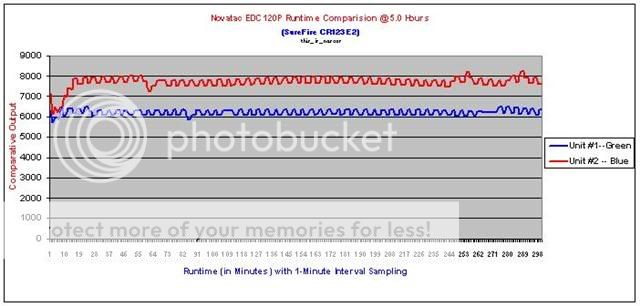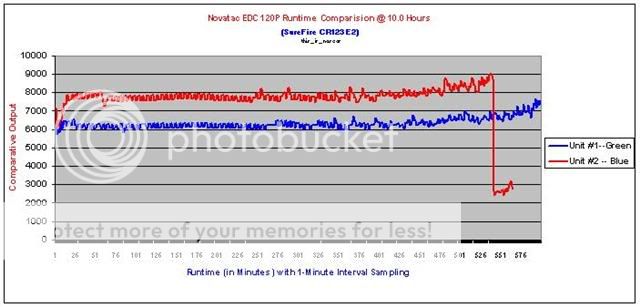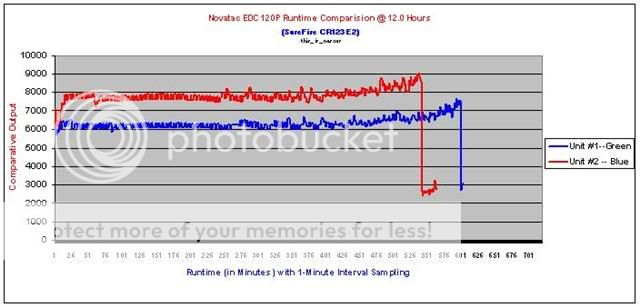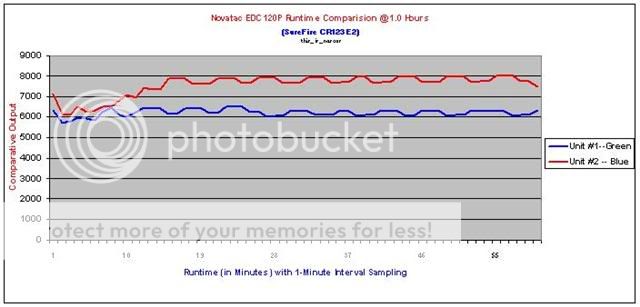this_is_nascar
Flashaholic
In the coarse of performing some testing on my (2) Novatac EDC 120P lights, I discovered something which I thought was rather interesting. I don't ever recall seeing this type of erratic behavior in any of my past HDS lights. These run-times were done on (2) different Novatac lights, each powered by a brand-new SureFire CR123 cell. They were locked into the default secondary mode (30-lumens according to the manual) and left to run only until such time when output dropped significantly.
The 1st graph plots the data over the first 5-hours, the 2nd for 10-hours and the 3rd for 12-hours. Does anyone venture to guess what could be causing this erratic fluctuation? Visually, it does not appear to be noticeable that this condition is occurring.



The 1st graph plots the data over the first 5-hours, the 2nd for 10-hours and the 3rd for 12-hours. Does anyone venture to guess what could be causing this erratic fluctuation? Visually, it does not appear to be noticeable that this condition is occurring.






